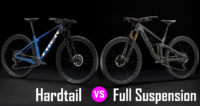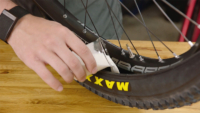Gravel Bike vs Mountain Bike Comparison: Which Type to Choose?
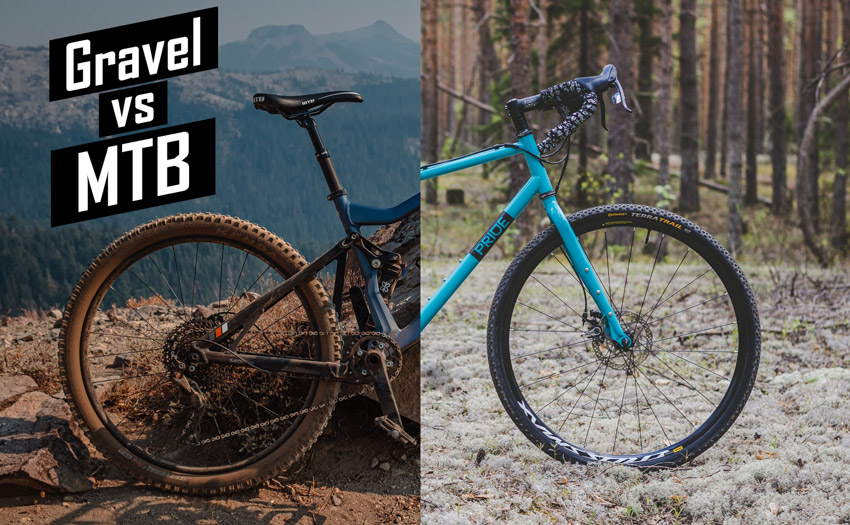
Gravel bikes have seen massive growth in popularity over the past decade, to the point that most bicycle manufacturers have a gravel model or selection of gravel bikes.
Their versatility and fun ride qualities make them the perfect bike for a range of riders, especially those who enjoy both mountain biking and road biking.
Comparing a gravel bike vs. a mountain bike isn’t straightforward. Although the bikes don’t look alike, gravel models cleverly borrow some of the traits which make MTBs so effective off-road.
This article will discuss each bike, where it is used, and the main differences in design and componentry to give you a better idea of which style is the best for you.
Here’s a selection of mountain bike-specific brands with gravel bikes as their only alternative discipline:
- Evil Bikes
- Ibis Cycles
- Juliana Bicycles
- Niner Bikes
- Orange Mountain Bikes
- Pivot Cycles
- Santa Cruz Bicycles
What Are Gravel and Mountain Bikes Used For?
Both gravel and mountain bikes flourish on varied terrain, but gravel bikes perform better on less technical terrain, such as gravel, hardpacked singletracks, and even pavement. In contrast, MTBs feel and handle better as the terrain gets rougher.
It’s important to remember that both categories have a broad spectrum of designs, especially mountain bikes. For example, comparing an XC mountain bike vs. gravel bike is different from comparing a downhill MTB vs. gravel bike, as each has significantly different abilities.
Gravel Bikes
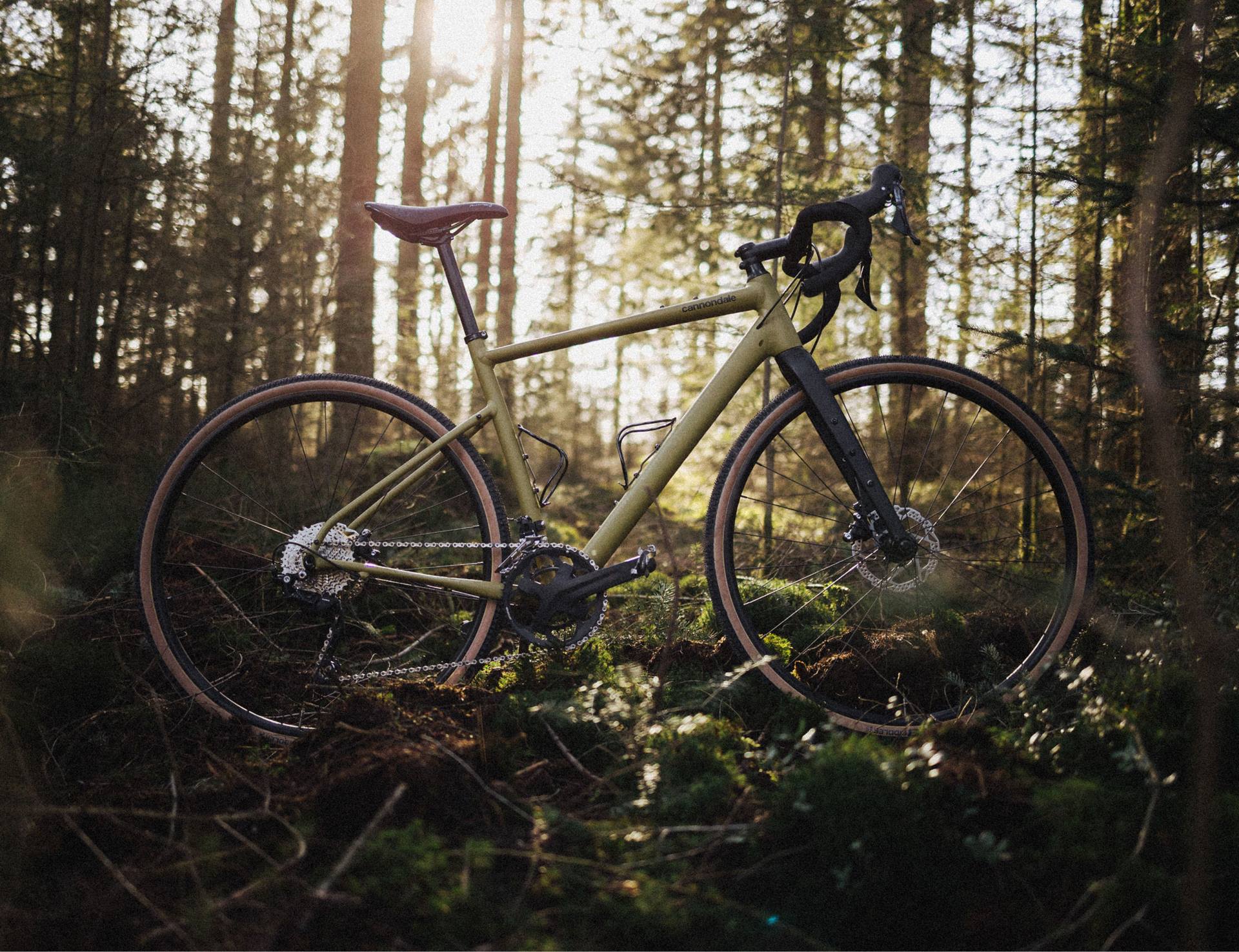
Cannondale Topstone 2 gravel bike. (Image source: cannondale.com)
As the name suggests, gravel bikes can go off-road on gravel trails, forest paths, and even light to moderate mountain bike courses. In addition, they perform relatively well on tarmac and asphalt, making them arguably the most versatile bike style.
What Is a Gravel Bike? Let us Explain
The gravel category initially diverged from cyclocross and has continued to develop and take on characteristics of mountain bikes, in particular hardtails. Gravel bikes are characterized by their wide, grippy tires (typically 40-47mm), endurance ride position, stable geometry, unique flared drop handlebars, and frame mounts.
Gravel bikes are designed to be comfortable for long-distance endurance riding, stable on a wide variety of terrains, efficient on roads, and versatile for varied jobs like bikepacking, touring, or commuting.
Unfortunately, they don’t excel in a specific domain, so a rigid mountain bike is better if you’re looking for a pure off-road trail machine. Likewise, a road bike is the best bet if you want fast and agile road performance.
As we mentioned above, there is tons of variance among gravel bicycles, including full-suspension models like the Cannondale Topstone Carbon and Niner MCR 9, or aerodynamic race bikes like Bianchi’s Arcadex.
Mountain Bikes
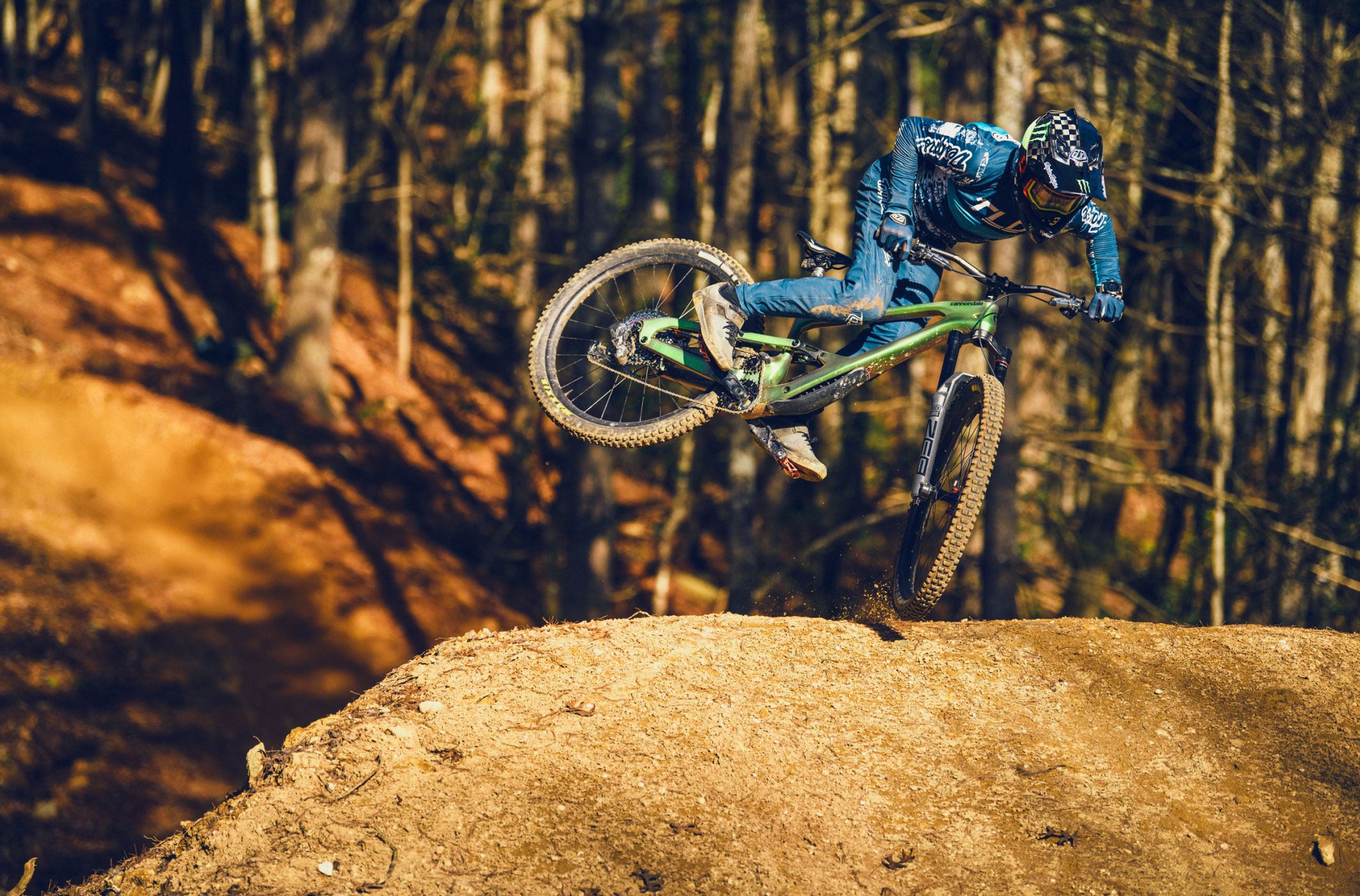
Cannondale Jekyll 1 mountain bike. (Image source: cannondale.com)
Mountain bikes are the ultimate off-road machines, providing unmatched stability, control, comfort, and fun when riding any singletrack courses or rough forest trails.
They achieve this with wide 2-3″ tires with treads for traction on varied trail surfaces, while suspension helps keep your tires in contact with the ground and stops big hits from reaching the handlebars and pedals, which could cause you to lose control. As such, the rougher and more technical a trail is, the more suspension you need in order to achieve this effect.
Hardtail vs Full Suspension Mountain Bikes: Which Type Is Right for You?
Other characteristics that allow MTBs to excel off-road include long and slack geometry, wide handlebars for leverage, dropper seatposts for descending, and powerful disc brakes.
Again, there are many types of mountain bikes. For example, hardtails are better for mixed-terrain riding as they are more efficient when climbing or riding on smooth terrain than full-suspension MTBs.
On the other hand, full-suspension performance can’t be beaten on rough and technical trails, as they allow you to go faster with more control and comfort.
Gravel Bike vs Mountain bike: Main Differences
Comparing the individual components and exploring where these two types differ provides us with a more detailed understanding of the gravel vs mountain bike puzzle. Remember, the individual parts vary enormously across the models in each category.
Geometry and Rider Position

Cannondale Topstone Alloy vs Jekyll 1 geometries compared. Both fit riders approximately 5’11” – 6’4″. (Image source: bikeinsights.com)
The frame geometry of a gravel bike is visually very different from a mountain bike. However, gravel bikes incorporate some of the same concepts used by MTB manufacturers to help bridge the gap in off-road performance between mountain and road.
Firstly, gravel bike wheelbases and chainstays are shorter, and the head and seat angles are steeper. On the other hand, mountain frames are longer, and the angles are slack. This combination puts the rider in a more balanced and stable position for descending steep and technical trails. In addition, you can shift your weight around easier in this upright position.
Conversely, gravel bike geometry puts the rider in a slightly more advanced position, reaching forward and down to the handlebars to improve aerodynamics. Nonetheless, gravel wheelbases are still relatively long, and the head tube and seat tube angles are slack.
This balance ensures reasonable stability and control off-road, along with comfort and efficiency for long-distance riding.
Gravel vs Mountain Bike Suspension

Cannondale Topstone Carbon with proprietary Kingpin rear suspension (30 mm) and Lefty Oliver fork (30 mm). (Image source: cannondale.com)
More and more gravel bike manufacturers include suspension on at least one of their gravel offerings, but most gravel bikes don’t have any. On the other hand, almost all modern mountain bikes have suspension.
Gravel suspension is generally very slight (travel between 20mm and 60mm). Most suspension brands, including big-name manufacturers SR Suntour, RockShox, and Fox, have a gravel-specific fork to meet the ever-growing demand.
Rear pivot suspension, such as the Niner MCR 9 (50 mm) or Cannondale Topstone Carbon (30 mm), is less common in the gravel market. This low-travel rear suspension slightly lowers pedaling efficiency but boosts control and comfort on rough trails.
Hardtail mountain bikes are those with fork suspension only. Hardtail fork travel is usually in the range of 100 to 160mm travel, but it can be even more depending on the type. As a result, these bikes can’t handle advanced trails very well. Still, they’re cheaper, lighter, and easier to maintain, making them ideal for light to moderate trails where efficiency, speed, and low weight are necessary. Cross-country mountain bikers typically favor hardtails for these reasons.
Full-suspension mountain bikes pair the suspension fork with a rear shock with travel up to 210mm. The extra suspension component increases weight, cost, and maintenance complexity and reduces pedaling efficiency. However, comfort and control are much better on rough terrain, making these bikes ideal for enduro and downhill mountain biking.
Mountain Bike vs Gravel Bike Gearing
The difference between mountain bike vs. gravel bike drivetrains is minimal compared to other components.
Modern mountain bikes typically use 1x (single chainring) drivetrains with massive ‘dinner plate’ cassettes around 10-51t, perfect for tackling steep gradients. Only select cheap MTBs continue to use 2x drivetrains.
In contrast, there is more variation among gravel bikes. Many use mountain bike-style 1x drivetrains and wide cassettes, around 11-42t, for climbing steep gradients on loose terrain. Other models use 2x drivetrains with road-style cassettes in the region of 11-34t, allowing greater pedaling efficiency on smooth terrain and the ability to pedal at higher speeds. The drivetrain you choose will depend on your preferences.
Tires and Tire Clearance
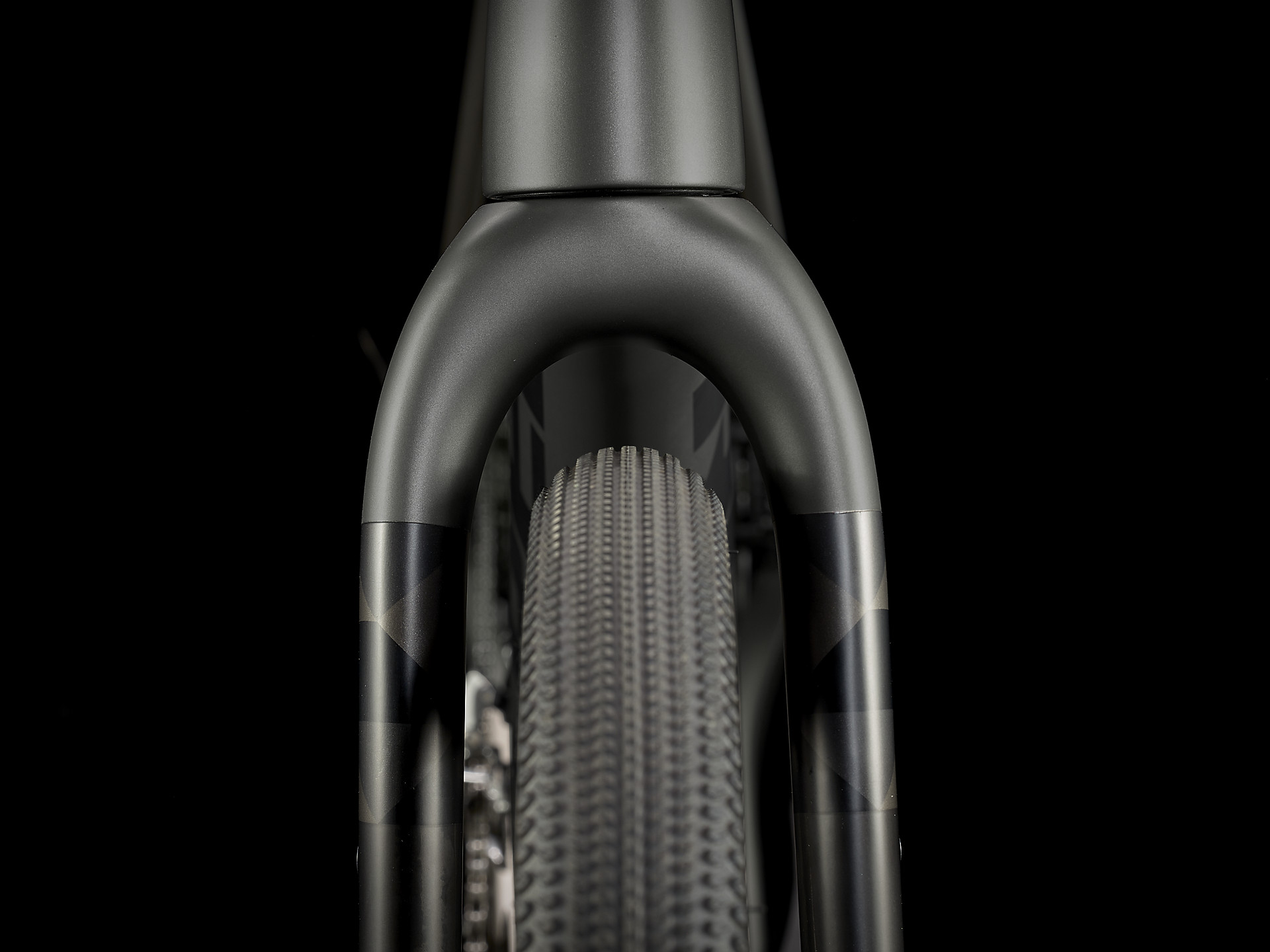
Most gravel bikes come with 40-45 mm wide tires, but some models have clearance for even more width. (Image source: trekbikes.com)
Mountain bike tires vary hugely, but they generally measure 2″ or more in width and have moderate to deep tread that helps maintain traction on loose surfaces and when cornering at speed. Additionally, they are thicker with puncture-resistant sidewalls to improve durability.
On the other hand, gravel bike tires are narrower, measuring between 32mm and 51mm (2″) or as high as 2.2″ wide on 650b wheels. However, most models run 40-47mm as the standard. In addition to width, gravel tires are generally lighter and thinner, making them less durable on rough terrain.
Tubeless Tires Guide — All You Ever Wanted to Know
Gravel tire tread also varies, and you can change yours depending on your preferred riding. For example, road-heavy gravel bikers often prefer lightly treaded tires, while deep treads are better for mostly off-road or winter riding.
Finally, it’s worth mentioning that most modern MTB and gravel bikes are tubeless-ready, which is an excellent option for improving the durability and performance of your tires. However, it does add some cost and repair complexity.
Mountain Bike vs Gravel Bike Wheels
The wheel sizes are different on a gravel bike vs. mountain bike; 650b and 700c labels are used for gravel, while 26″, 27.5″, and 29″ measurements are used for MTBs.
Essentially, the 650b equals 27.5″ and 700c equals 29″. The only difference is rim width; mountain bikes have wider rims to accommodate wider tires.
One final difference between the two styles is the mixed-wheel (mullet) mountain bike design, a unique phenomenon in mountain bikes. Mixing the wheels is common on enduro or downhill MTBs as it balances the favorable characteristics of a 27.5″ rear wheel with those of a 29″ front wheel.
Handlebars and Seatpost
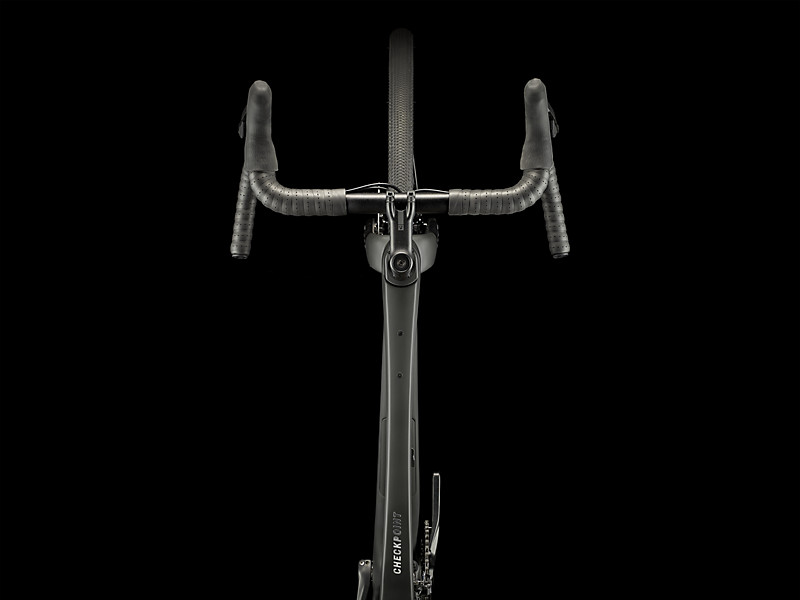
Modern gravel bikes typically come with flared drop handlebars that provide multiple hand positions and better control when riding off-road. (Image source: trekbikes.com)
Mountain bike handlebars are pretty simple. They are wide and flat, and they typically run straight from left to right. The benefit of these handlebars is they give the rider a high degree of leverage over the bike, making it easier to manipulate the front end over large obstacles.
The downside of flat bars is the limited hand positioning, so if you ride for several hours, it can be very uncomfortable on your wrists and hands. In addition, they put you in an aerodynamically poor, upright position.
Gravel bike handlebars are a unique development in cycling. They’re essentially road drop bars except wider and with shallow, flared drops. The extra width provides more control and stability off-road (sacrificing agility), and the flared drop bars increase stability further when descending in the drop position.
Additional benefits of drop handlebars are the improved aerodynamic efficiency and the availability of three hand positions (drops, hoods, flats) to keep your wrists and hands fresh for longer.
Lastly, it’s worth mentioning mountain bike seatposts. Many modern hardtail mountain bikes and almost all full-suspension models have dropper seatposts. These operate using a lever to lower the saddle. Then, while descending steep sections, you can shift your weight back and improve stability.
Gravel bike manufacturers are adopting dropper post tech for the considerable advantage gained when riding off-road, but most entry and mid-range models still come without a dropper.
Gravel Bike vs Mountain Bike: Which Is Best for You?
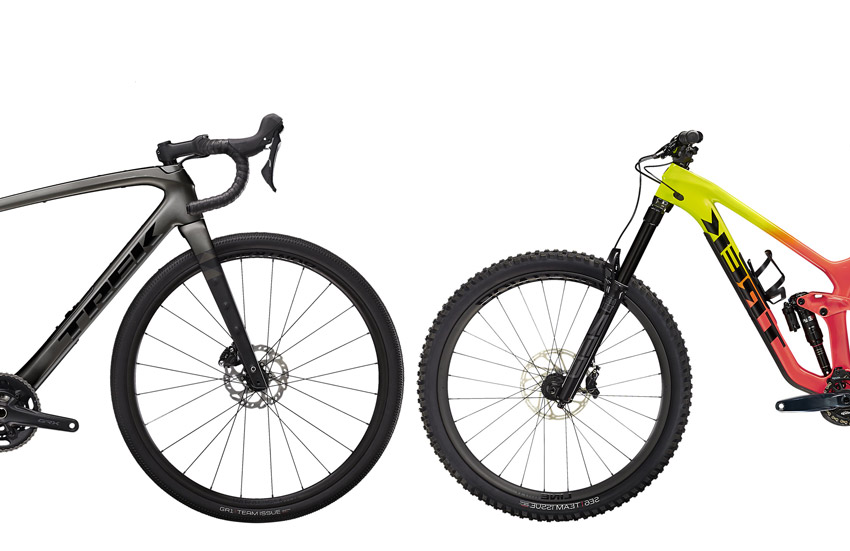 The gravel bike vs. mountain bike debate is hard to settle, as each style will appeal to different riders, serving specific purposes. However, we hope the above comparison has clarified which type is best for you.
The gravel bike vs. mountain bike debate is hard to settle, as each style will appeal to different riders, serving specific purposes. However, we hope the above comparison has clarified which type is best for you.
For example, gravel bikes are ideal for roadies to experience the world of off-road riding or for those who need to cover long distances over varied yet not too extreme terrain (such as for bicycle touring or bikepacking and even for commuting).
MTBs make off-road riding more enjoyable, comfortable, and safe. Any modern mountain bike will outperform a gravel bike on surfaces bumpier or more technical than light gravel paths or smooth mountain trails.
Another important point is that hardtails perform closer to gravel bikes on the road or on light trails than you would expect. The one area where they suffer is regarding comfort and efficiency over long distances.
We hope this article clarifies any questions you have when comparing gravel vs. mountain bikes and helps you decide which is best for you.


